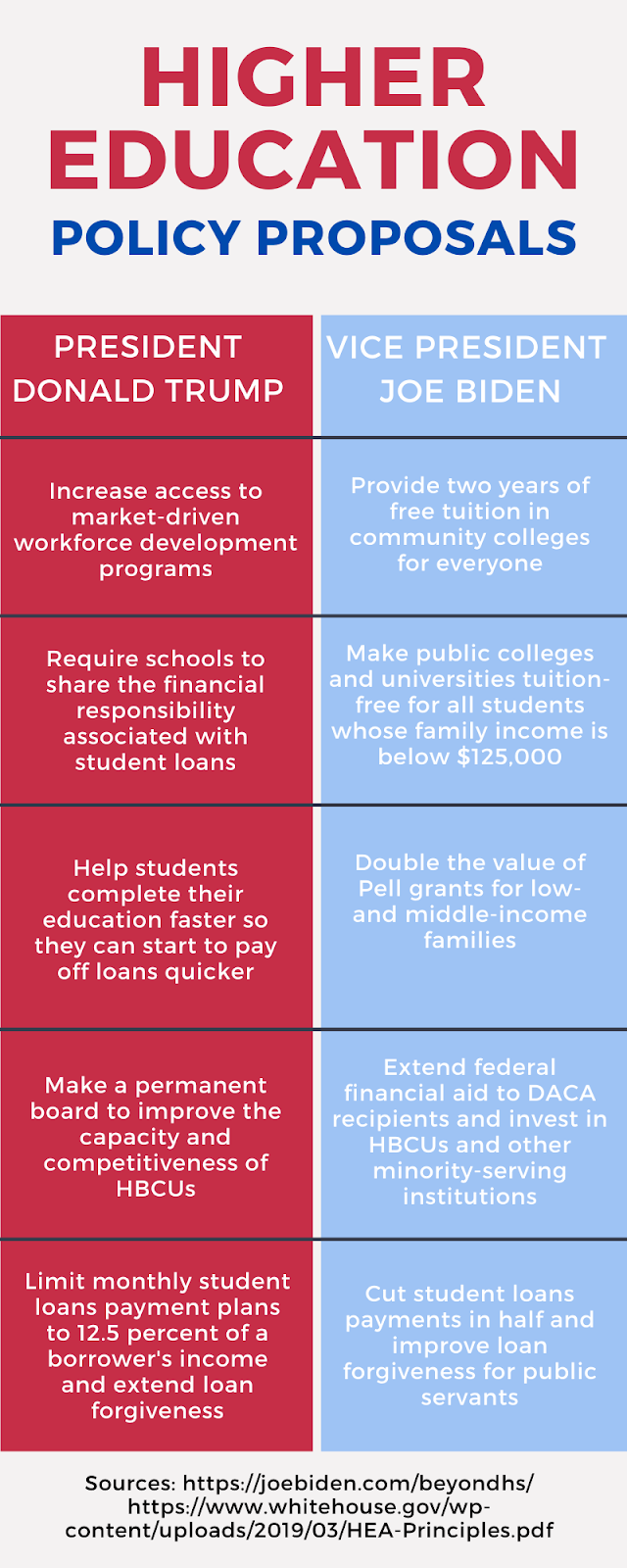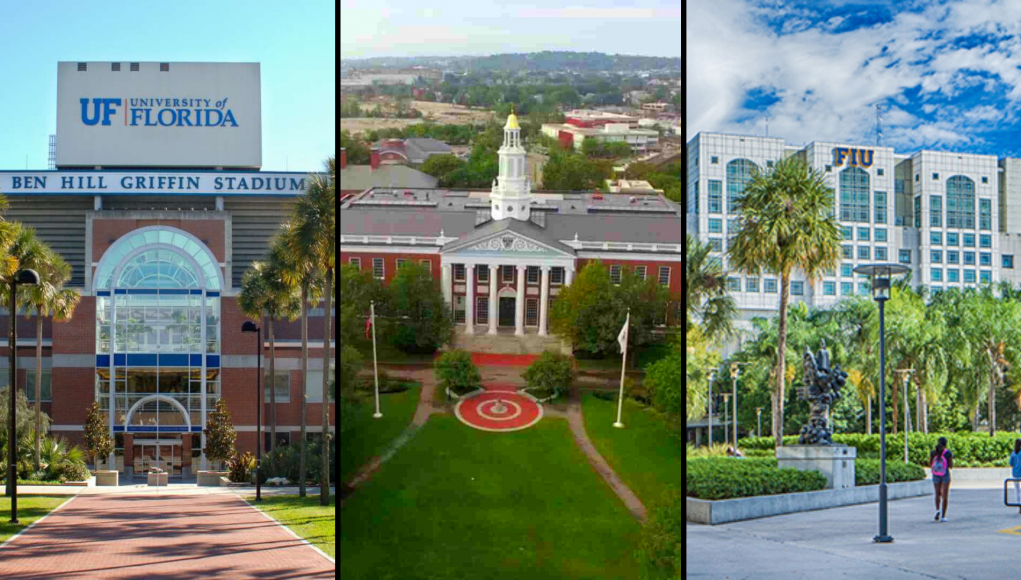The fight for free college tuition isn’t new, and it doesn’t look like it will end soon.
The coronavirus pandemic has led some college students and their parents to argue that tuition costs should be reduced if school is fully online. This debate has also brought back arguments that the cost of tuition is too high and leads to large amounts of student debt.
The idea of government-funded tuition made headlines during the 2020 Democratic primary, as candidates like Senators Bernie Sanders and Elizabeth Warren unveiled plans for free tuition and student-debt cancellation. The presumptive Democratic nominee, former Vice President Joe Biden, published his own plan this spring.
According to College Board, the average cost of tuition and fees for one year at a four-year public institution in the United States is $10,440 for in-state students and $26,920 for those coming from out of state.
At the same time, more than 43 million borrowers hold close to $1.5 trillion in student debt, according to the Georgetown University Center on Education and the Workforce (CEW). The average amount of student debt reported in a 2017 survey for the Federal Reserve was $32,731.
The two sides
Proponents of free college tuition argue it would help reduce the amount of student debt among young people.
Celina Mahabir, a graduate of Nova Southeastern University (NSU) and an incoming Florida International University (FIU) law student, said she has about $30,000 in student debt so far.
When she was applying to college, she was a Florida resident and therefore qualified to pay in-state tuition. But she also depended on her parents, who lived in Trinidad and Tobago.
“In some forms I would say, ‘Yeah, I’m still being funded to an extent by my parents,’ and because they couldn’t claim residency, I couldn’t qualify for certain things Florida residents can,” she said.
She couldn’t receive the Florida Bright Futures Scholarship, for example, so she didn’t receive enough federal aid to cover all expenses. Her parents took out loans.
NSU has a flat tuition rate of $16,185 per semester for students taking 12 to 18 credits. Mahabir chose to study at the private university — despite needing to take out loans — because she could stay with family and save money that she would have spent on a car or housing at another institution.
Supporters of free tuition also say it would make college more accessible to low-income and minority students.
“When you limit college education to people who can afford it, you’re also limiting the range of races or minority groups who can better their education and improve their communities,” said Varsha Gopaulchan, 22, a recent graduate of NSU.
Gopaulchan is an international student from Trinidad and Tobago. She said free tuition would not only help American students attend college, but would also open more opportunities to foreign students, who pay higher tuition and fees. But, right now, neither Biden’s plan nor President Trump’s address if tuition would also be free for international students. Warren and Sanders didn’t mention those students in their plans either.
Benjamin Baez, an FIU professor and chair of the Department of Educational Policy Studies, said students from low- and middle-income families usually can’t afford to go to college. So, they either don’t go, or they take out loans and accumulate debt over the years.
Baez said that offering free tuition would allow students to choose majors and jobs they enjoy, rather than getting a job only so they can pay their debt. They could also get more involved in research, internships, cultural opportunities and public service if they don’t have to worry about paying tuition or student loans.
Wenli Li, a senior economic advisor and economist at the Federal Reserve Bank of Philadelphia, found that student debt also affects the larger economy. Young people have less money to spend and could have low credit scores if they fail to pay their loans, which can prevent them from buying cars or homes.
Opponents of free college tuition say it would require raising taxes.
Baez said federal and state governments already fund part of college tuition through financial aid and scholarships, but the idea of free tuition is to have the federal government subsidize it completely. He believes raising taxes and cutting programs would definitely be needed.
Free tuition could also lead people to value their education less, according to Jose Gabilondo, a law professor at FIU who specializes in banking and finance.
“Economists believe that when something is free, people tend to overuse it and they don’t value it as much or take it as seriously,” he said. “There might be a little bit of truth to that. It may be that some people might take it very casually, whereas if they have to pay for it, they’ll think about it more and value it more.”
This could lead to higher dropout rates, said Richard Vedder, a Forbes contributor and professor of economics emeritus at Ohio University. If students don’t pay tuition, they could leave school more easily.
The Brookings Institution, a public policy nonprofit in Washington, D.C., noted another potential problem: free tuition won’t guarantee that more people will be employed because academic degrees don’t always teach the skills needed in the job market.
And, even without tuition, students would still have to pay for other expenses like housing and books.
Free tuition vs. free college
Free tuition isn’t the same as free college. The CEW’s Free College 101 report says that free college involves not only subsidizing tuition, but also books, transportation, housing and fees for things like student activities and athletic programs.
Currently, some policy proposals focus on free tuition instead of college. Biden’s plan includes offering free tuition for everyone enrolled in two-year community colleges and free tuition at four-year public universities for families with annual incomes below $125,000.
But, there are already programs that allow some students to go to college for free. One example is college promise programs, which offer high school graduates a scholarship covering full tuition and other college expenses if they meet certain requirements, like demonstrating financial need.
FIU’s own promise program, called the Golden Promise, provides full tuition and fees to some Florida residents with a zero expected family contribution (EFC), as calculated on the Free Application for Federal Student Aid (FAFSA). The school assures that it will cover those expenses by using federal, state and university grants.
Michael Ward, a recent graduate of FIU’s higher-education doctoral program, interviewed 13 students who benefit from the Golden Promise for his dissertation.
He noticed during his research that while FIU takes pride in offering debt-free education to recipients of the Golden Promise, some students carry other kinds of debt.
Rise of tuition price over the years
According to the College Board Trends in College Pricing 2019 report, in-state tuition and fees at public four-year universities increased at an average rate of 2.2% per year between the academic years of 2009-2010 and 2019-2020. This represents an average annual increase of $200.
The rate is lower than the averages of the previous two decades. Tuition and fees increased at an annual average of 3.9% in the 1990s, and 5% in the 2000s.
Free tuition around the world
Countries that offer free college tuition include Norway, Germany, Finland and Brazil. In Brazil, there’s also a competitive admission process that includes standardized tests.
Bianca Oliveira, 21, is a business student at Florida Atlantic University. She’s originally from Brazil and has been studying in the United States since 2017.
She said that public education in Brazil is free and esteemed. She chose to study in the United States to join her partner and experience studying abroad, but before moving, she took all the steps to enter college in her home country.
Each state has at least one federal and one state university, said Oliveira. In her senior year of high school, she tried to enroll in her state’s federal school, the Federal University of Pernambuco.
Free tuition in the 2020 elections

Both President Trump and former Vice President Biden have released policy proposals related to college tuition and student debt.
While President Trump’s proposals don’t include offering free tuition, they do involve extending loan forgiveness plans, increasing workforce development programs, and helping students complete their education and pay their loans faster.
Meanwhile, Vice President Biden plans to provide free tuition for everyone in two-year community colleges and offer free tuition in four-year public universities for students whose family incomes are below $125,000. He says he will also cut payments on undergraduate federal student loans in half.
Gabilondo, the FIU law professor, said despite these proposals it is unlikely that the United States will see free tuition nationwide soon, given the economy and culture of the country.
“We have a very market-driven economy, in the sense that everything is privatized,” he said. “So, one of the challenges of free tuition in the United States is that it is alien, foreign, to this country. It’s not typical in the U.S. because everything is a market.”
Correction: An earlier version of this story mistakenly identified Jose Gabilondo as an economics professor.
































